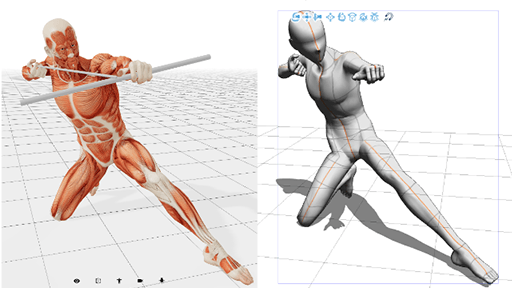Organizing Your Workspace
First of all, the interface color. For me, drawing on dark mode works best - makes the whole interface look more professional and clean. In the end it is a personal choice to the artist wether they prefer working on light or dark mode. To change the interface color, go to File > Preferences > Interface and choose the one that suits your workflow better.
Essentially, since I am left-handed, the placement of tools is better for me like this but you can adapt that for you as you find more suitable. The tools I have on quick access are also the ones I use the most while I am painting and, once again, it is also customizable so you can also adjust it to your workflow. Simply go to Window > and select and drag any tool you find necessary to make your workflow easier and more natural. To lock them next to any other, just drag the selected tool near them.
For me, what works best is having Tools distributed on the left side and having them on a small space, leaving only the icons for each tool. This way, the left side of the interface (don't forget I am left handed) is clean and has enough space for me to work.
The right side is the place where I place my tool properties and subtools and many other features that Clip Studio displays for artists. In general, here are the tools I find necessary for me:
1. Tool Properties
2. SubTool
3. Navigator - I can't stress this enough, especially when I am working with detailed work. It's easy to get a bit lost when I'm doing details but Navigator allows me to get an overall image of my painting.
4. Color Wheel - for me the color wheel is the best option but don't worry. Clip Studio also has Color Sliders.
5. Color Sets - for when I want to work with a specific color pallette, this feature keeps all colors available for me to color pick them and speed up my painting process.
6. LAYERS - I keep them on a large space since I usually work with a lot of layers.
7. Layer Properties
8. Auto-Actions - I have autoactions enabled on my workspace because I enjoy changing my painting colors and overall effect inbetween the painting process. I'm a big fan of that 80's anime retro blur and VHS effects. You can download many autoactions in Clip Studio Assets. Please note that this is not only for after-effects. You can create and customize autoactions to suit your preferences, for example duplicating layers and adding blur or changing blending modes. It's up to you to customize it as you see fit.
In the long run, what I think is most important to keep in mind when organizing your space is considering your own needs. For me, for example, having the timeline (Window > Timeline) enabled is not relevant for I don't ever use it. But for an animator it is important. Also, if you use 3D models a lot, having the material section on your interface may end up being time saving. For me, the most important customizable part of Clip Studio was being able to organize my brushes, pencils and pens - I download a lot from Clip Studio Assets, which, to me, is one of the most fun features on this software - and it gets a bit messy sometimes. Being able to organize them in my own preferencial way really helps me and allows me to work in a more relaxing way. Besides organizing, edit your shortcuts in order for them to help you. That's what they exist for. For me, personally, the most used are CTRL+Z (undo), CTRL+Y (Redo) and CTRL+R(Rotate), but I also switch between tools using my keyboard, and to do that intuitively I had to customize it to my very own preferences.
To costumize your shortcuts, go to File > Shortcut Settings and have fun.
Overall, don't forget to have fun. Clip Studio has all these tools,features and customizable interface for you to really enjoy the best of your painting experience.
Hope this tips are helpful in organizing your workspace.














コメント